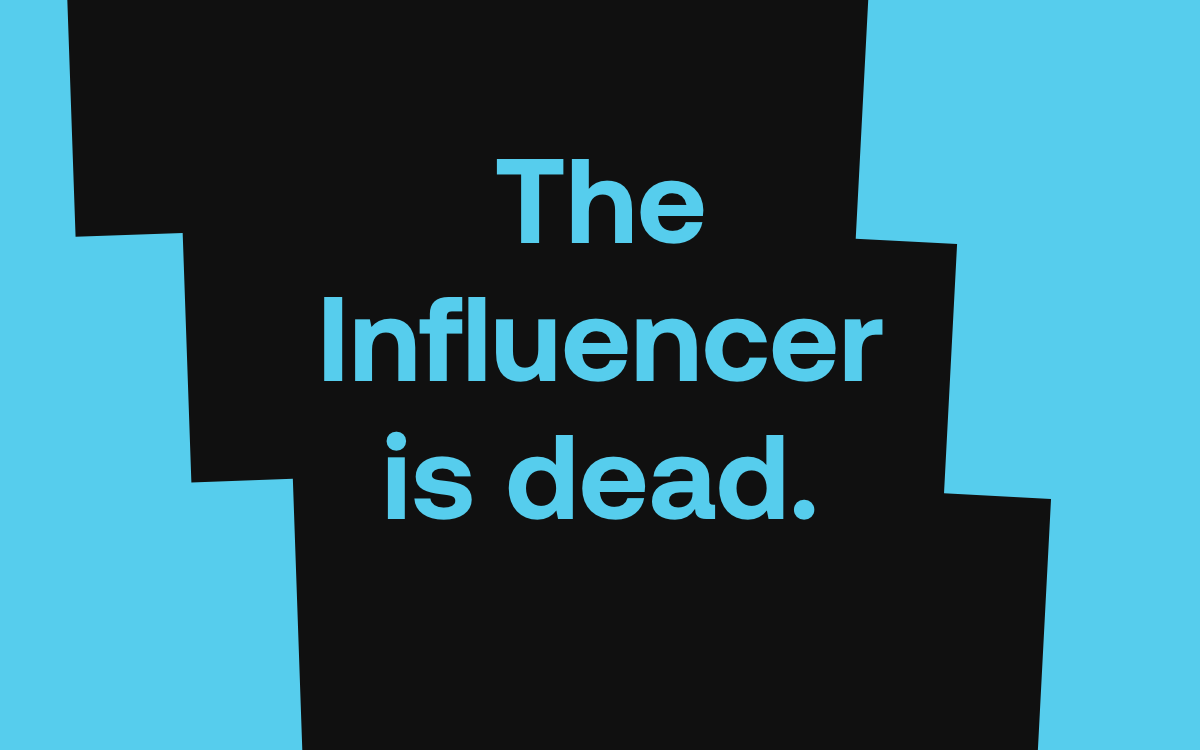Blog
The Influencer is dead. Long live the Community.

The concept of influencer marketing is a great one. People buy into people, and influencer marketing is all about authentic storytelling for brands that want their message to not only be heard, but trusted and actioned.
The trouble is, the traditional influencer model is flawed. Brands get it wrong by creating a strategy that is built around paying someone with lots of followers to pretend to “like” their brand or product. Unsurprisingly, this has zero authenticity and actually does more to erode trust than to create it. And the evidence is there for us all to see. According to data from YouGov, 96 percent of UK adults do not trust these influencers and Salesforce has reported that 65 percent of customers have stopped buying from a brand because they saw their actions as distrustful.
Instead, consumers are increasingly making purchasing decisions based on recommendations of people they know and trust. But how can brands tap into this? They need to re-evaluate and re-identify who their true influencers really are.
Redefining the influencer
Today’s most successful brands are starting to treat their customers as a channel in and of themselves, identifying superfans from within their existing customer base to drive word of mouth growth for them.
These individuals, known as brand advocates, may not be the ones buying the most, but they are the people with the most influence because they live and breathe the brands they love. True brand advocates tell everyone they know about their favoured brands, which makes them the most powerful engine of word of mouth and free customer acquisition available to any business. Think back to the last time you told your friends about a great new restaurant you’ve discovered? Or told them about your favourite hair salon?
The billion-dollar global athletic apparel company, Lululemon, is a great example of this in action. Its customers believe in the company’s vision and share in its purpose. They are also very quick to share stories and convince their friends and family to buy their products, as well as argue in defence of the brand when required. Lululemon does not pay celebrities to promote their products but instead trusts its customers to do it instead, and to great effect.
Turning customers (not “influencers”) into advocates
Building a community of advocates and then incentivising them to drive word of mouth growth is not easy (especially at scale), but it is going to be fundamental to a brand’s ability to grow organically in future.
Understanding who sits within your brand network is the first step. After all, every brand is a collection of people first – customers of course, but also employees, industry experts, in store associates etc. Once you have identified the core communities that make up your brand, it is about creating a strategy to engage, celebrate, reward and activate each one.
Some ideas for building a community of brand advocates include:
- Powering advocacy and loyalty clubs to reward top customers and drive them to further promote and support a brand.
- Enabling passionate communities of professionals and experts such as hair stylists or sports instructors, customers and store teams to promote a brand and recommend products to their online and social networks.
- Rewarding customers with exclusive perks, benefits and exclusive sales for completing activities to support the brands such as content creation, referrals, challenges, surveys, polls and social posting.
British luxury jewellery brand, Monica Vinader, is a good example of a company that is driving growth through its strong and loyal fanbase with tactics like those listed above. By identifying priority segments within its own brand network – the loyalist customer and the social customer – the company designed and built advocacy programs – the MV Family and the MV Insiders respectively – tailored to each group in order to drive loyalty among them. The result? A core group of super fans who do Monica Vinader’s selling for them.
Traditional influencer marketing is an expensive way for brands to erode trust among a consumer base that is increasingly looking for brands that can demonstrate authenticity and integrity. But those brands that can redefine their influencer marketing strategy and instead focus on growing and nurturing a community of advocates from within their own network to represent, promote and shout about them, will be the ones that succeed in 2022 and beyond.
Found this interesting? we have a blog explaining the 4 types of influencers, and the two types that can help you move beyond traditional influencer marketing.


